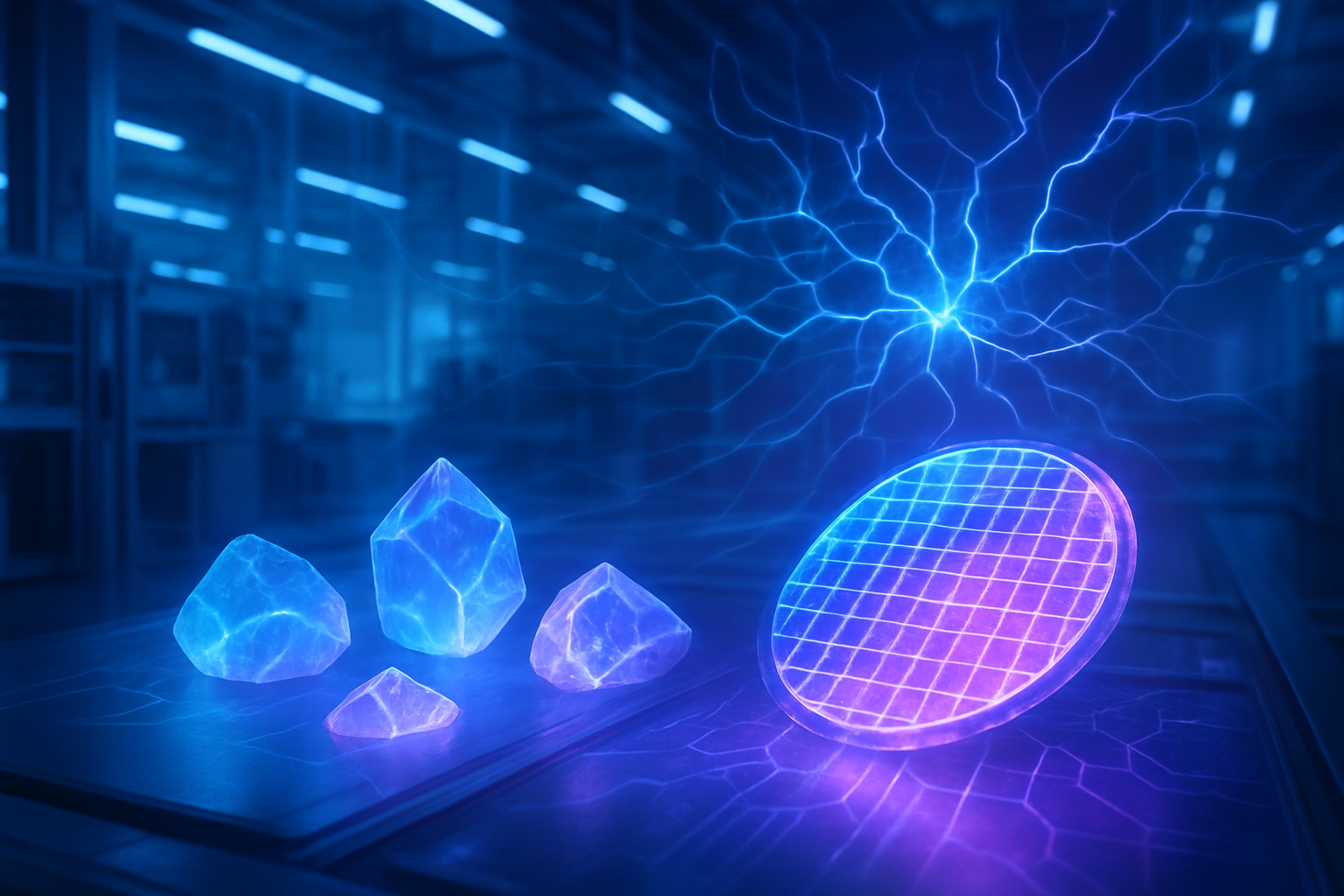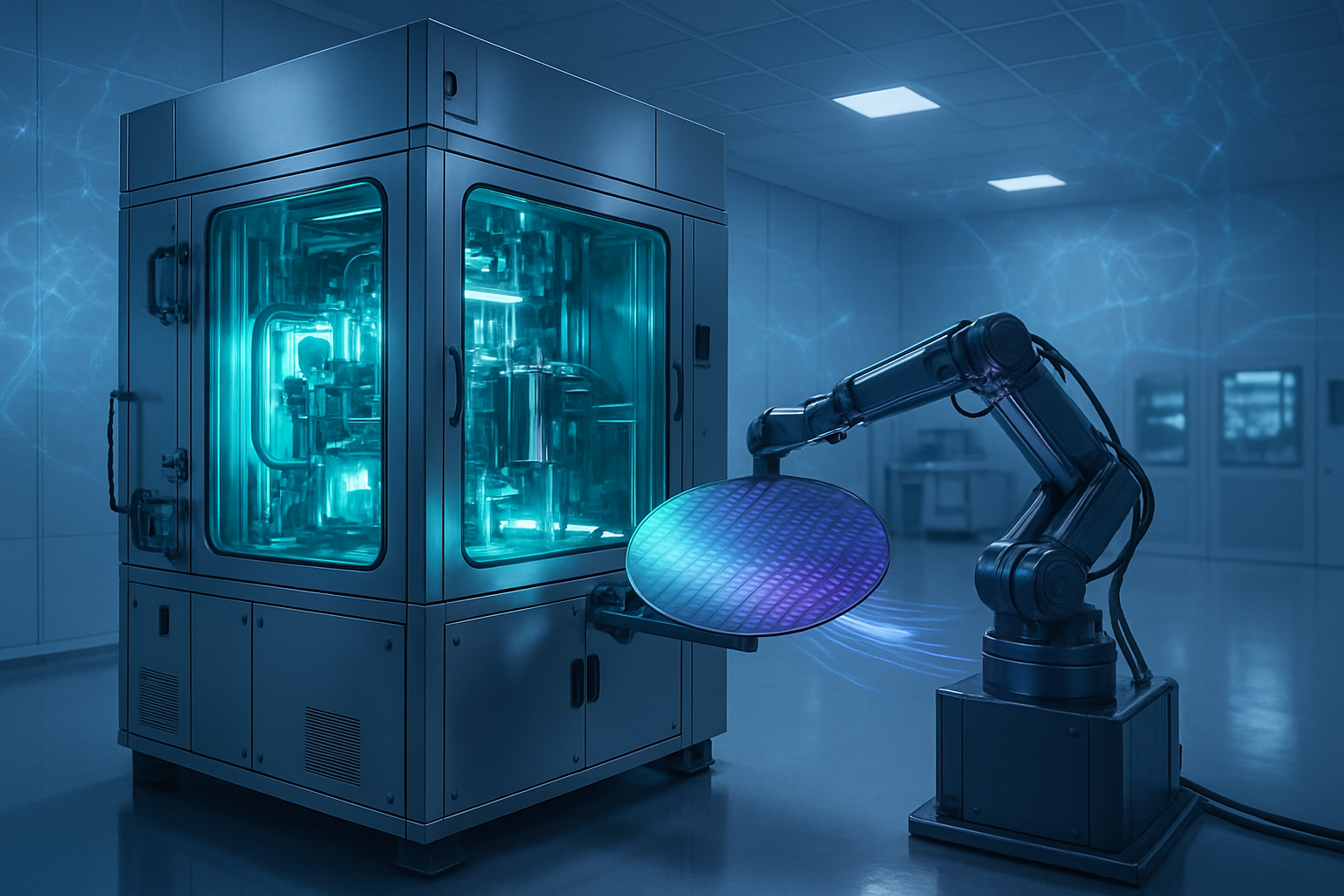Veeco Instruments Inc. (NASDAQ: VECO) has unveiled its groundbreaking Lumina+ MOCVD System, a pivotal innovation poised to redefine the landscape of compound semiconductor manufacturing. This advanced Metal-Organic Chemical Vapor Deposition platform is not merely an incremental upgrade; it represents a significant leap forward in enabling the high-volume, cost-effective production of the specialized chips essential for the burgeoning demands of artificial intelligence. By enhancing throughput, uniformity, and wafer size capabilities, the Lumina+ system is set to become a cornerstone in the development of faster, more efficient, and increasingly powerful AI hardware, accelerating the pace of innovation across the entire tech industry.
The immediate significance of the Lumina+ lies in its ability to address critical bottlenecks in the production of compound semiconductors—materials that offer superior electronic and optical properties compared to traditional silicon. As AI models grow in complexity and data processing requirements skyrocket, the need for high-performance components like VCSELs, edge-emitting lasers, and advanced LEDs becomes paramount. Veeco's new system promises to scale the manufacturing of these components, driving down costs and making advanced AI hardware more accessible for a wider range of applications, from autonomous vehicles to advanced data centers and immersive AR/VR experiences.
Technical Prowess: Unpacking the Lumina+ Advancements
The Lumina+ MOCVD System distinguishes itself through a suite of technological advancements designed for unparalleled performance and efficiency in compound semiconductor deposition. At its core, the system boasts the industry's largest arsenic phosphide (As/P) batch size, a critical factor for manufacturers aiming to reduce per-wafer costs and significantly boost overall output. This capacity, combined with best-in-class throughput, positions the Lumina+ as a leading solution for high-volume production, directly translating to a lower cost per wafer—a key metric for economic viability in advanced manufacturing.
A cornerstone of Veeco's (NASDAQ: VECO) MOCVD technology is its proprietary TurboDisc® technology, which the Lumina+ seamlessly integrates and enhances. This proven reactor design is renowned for delivering exceptional thickness and compositional uniformity, low defectivity, and high yield over extended production campaigns. The TurboDisc® system employs a high-speed vertical rotating disk reactor and a sophisticated gas-distribution showerhead, creating optimal boundary layer conditions that minimize particle formation and contamination. This meticulous control is crucial for producing the high-precision epitaxial layers required for cutting-edge optoelectronic devices.
A significant upgrade from its predecessor, the original Lumina platform which supported up to six-inch wafers, the Lumina+ now enables the deposition of high-quality As/P epitaxial layers on wafers up to eight inches in diameter. This seamless transition to larger wafer sizes without compromising process conditions, film uniformity, or composition is a game-changer for scaling production and achieving greater economies of scale. Furthermore, the system incorporates advanced process control mechanisms, including Veeco's Piezocon® gas concentration sensor, ensuring precise control of metal-organic flux. This level of precision is indispensable for manufacturing complex photonic integrated circuits (PICs) and microLED chips, guaranteeing identical deposition conditions across multiple MOCVD systems and enhancing overall product consistency.
Initial reactions from the AI research community and industry experts highlight the Lumina+'s potential to accelerate foundational AI research by providing access to more advanced and cost-effective hardware. Compared to previous MOCVD systems, which often struggled with the balance between high throughput and stringent uniformity requirements for larger wafers, the Lumina+ offers a comprehensive solution. Its ability to achieve over 300 runs between chamber cleans also translates into system uptime exceeding 95%, a stark improvement that directly impacts production efficiency and operational costs, setting a new benchmark for MOCVD technology.
Impact on the AI Ecosystem: Beneficiaries and Competitive Shifts
The introduction of Veeco's (NASDAQ: VECO) Lumina+ MOCVD System is poised to send ripples throughout the artificial intelligence ecosystem, creating significant advantages for a diverse range of companies, from established tech giants to agile startups. Companies heavily invested in the development and deployment of next-generation AI hardware stand to benefit most directly. This includes firms specializing in optical communications, 3D sensing, LiDAR, augmented and virtual reality (AR/VR), and high-efficiency power electronics—all sectors where compound semiconductors are critical enablers.
For major AI labs and tech companies like NVIDIA (NASDAQ: NVDA), Google (NASDAQ: GOOGL), Microsoft (NASDAQ: MSFT), and Amazon (NASDAQ: AMZN), which are constantly pushing the boundaries of AI model size and computational demands, the Lumina+ offers a pathway to more powerful and energy-efficient AI accelerators. The system's ability to produce high-quality VCSELs and edge-emitting lasers at scale will directly impact the performance of optical interconnects within data centers and between AI chips, reducing latency and increasing bandwidth—critical for distributed AI training and inference. Furthermore, the enhanced production capabilities for advanced displays (mini/microLEDs) will fuel innovation in human-machine interfaces for AI, particularly in AR/VR applications where visual fidelity and efficiency are paramount.
The competitive implications are substantial. Manufacturers who adopt the Lumina+ early will gain a strategic advantage in cost-effectively scaling their production of compound semiconductor components. This could lead to a disruption in existing supply chains, as companies capable of producing these specialized chips at lower costs and higher volumes become preferred partners. For instance, Rocket Lab (NASDAQ: RKLB), a global leader in launch services and space systems, has already placed a multi-tool order for the Lumina+ system, leveraging it to double their production capacity for critical components like space-grade solar cells under the Department of Commerce’s CHIPS and Science Act initiatives. This demonstrates the immediate market positioning and strategic advantages conferred by the Lumina+ in enabling domestic production and enhancing national technological resilience.
Startups focused on novel AI hardware architectures or specialized sensing solutions could also find new opportunities. The lowered cost per wafer and increased production efficiency might make previously unfeasible hardware designs economically viable, fostering a new wave of innovation. The Lumina+ essentially democratizes access to advanced compound semiconductor manufacturing, enabling a broader array of companies to integrate high-performance optoelectronic components into their AI products and services, thereby accelerating the overall pace of AI development and deployment.
Wider Significance: Reshaping the AI Landscape
The advent of Veeco's (NASDAQ: VECO) Lumina+ MOCVD System represents more than just a technological upgrade; it signifies a pivotal moment in the broader AI landscape, aligning perfectly with the escalating demand for specialized, high-performance computing. As AI models become increasingly sophisticated and data-intensive, the limitations of traditional silicon-based architectures are becoming apparent. Compound semiconductors, with their inherent advantages in speed, energy efficiency, and optical properties, are emerging as the fundamental building blocks for next-generation AI, and the Lumina+ is the engine driving their mass production.
This development fits squarely into the overarching trend of hardware-software co-design in AI, where advancements in physical components directly enable breakthroughs in algorithmic capabilities. By making high-quality VCSELs for 3D sensing, LiDAR, and high-speed data communication more accessible and affordable, the Lumina+ will accelerate the development of autonomous systems, robotics, and advanced perception technologies that rely heavily on rapid and accurate environmental understanding. Similarly, its role in producing edge-emitting lasers for advanced optical communications and silicon photonics will underpin the high-bandwidth, low-latency interconnects crucial for hyperscale AI data centers and distributed AI inference networks.
The impacts extend beyond mere performance gains. The Lumina+ contributes to greater energy efficiency in AI hardware, a growing concern given the massive power consumption of large AI models. Compound semiconductors often operate with less power and generate less heat than silicon, leading to more sustainable and cost-effective AI operations. However, potential concerns include the complexity of MOCVD processes and the need for highly skilled operators, which could pose a challenge for widespread adoption without adequate training and infrastructure. Nonetheless, the system's high uptime and advanced process control aim to mitigate some of these operational complexities.
Comparing this to previous AI milestones, the Lumina+ can be seen as an enabler akin to the development of advanced GPUs in the early 2010s, which unlocked the deep learning revolution. While not a direct AI algorithm breakthrough, it is a foundational manufacturing innovation that will indirectly fuel countless AI advancements by providing the necessary hardware infrastructure. It underpins the shift towards photonics and advanced materials in computing, moving AI beyond the confines of purely electronic processing and into an era where light plays an increasingly critical role in data handling.
Future Developments: The Road Ahead for AI Hardware
Looking ahead, the Veeco (NASDAQ: VECO) Lumina+ MOCVD System is poised to be a catalyst for several near-term and long-term developments in AI hardware. In the near term, we can expect a surge in the availability and affordability of high-performance compound semiconductor components. This will directly translate into more powerful and efficient AI accelerators, improved sensors for autonomous systems, and higher-resolution, more energy-efficient displays for AR/VR applications. Companies currently limited by the cost or scalability of these components will find new avenues for product innovation and market expansion.
On the horizon, the long-term implications are even more profound. The Lumina+ paves the way for advanced photonic integrated circuits (PICs) to become a standard in AI computing, potentially leading to entirely new architectures where light-based communication and computation minimize energy loss and maximize speed. This could enable true optical AI processors, a significant leap beyond current electronic designs. Furthermore, the ability to produce high-quality mini and microLEDs at scale will accelerate the development of truly immersive and interactive AI experiences, where seamless visual feedback is critical.
However, several challenges need to be addressed to fully realize the potential of these developments. Continued research into novel compound semiconductor materials and deposition techniques will be crucial to push performance boundaries even further. The integration of these advanced components into complex AI systems will also require sophisticated packaging and interconnect technologies. Additionally, the industry will need to cultivate a skilled workforce capable of operating and maintaining these advanced MOCVD systems and designing with these new materials.
Experts predict that the Lumina+'s impact will be felt across various sectors, from quantum computing, where precise material control is paramount, to advanced medical imaging and biotechnology, which can leverage high-performance optoelectronic devices. The system's emphasis on scalability and cost-effectiveness suggests a future where advanced AI hardware is not a niche luxury but a widespread commodity, driving innovation across the entire technological spectrum. We can anticipate further optimization of MOCVD processes, potentially leading to even larger wafer sizes and more complex multi-layer structures, continuously pushing the envelope of what's possible in AI hardware.
Wrap-up: A New Dawn for AI's Foundation
In summary, Veeco's (NASDAQ: VECO) Lumina+ MOCVD System marks a definitive inflection point in the manufacturing of compound semiconductors, laying a crucial foundation for the next generation of artificial intelligence hardware. The system's unparalleled features—including the largest As/P batch size, best-in-class throughput, lowest cost per wafer, and support for eight-inch wafers—represent significant technological leaps. These advancements, built upon the proven TurboDisc® technology and enhanced with precise process control, directly address the escalating demand for high-performance, energy-efficient components vital for complex AI applications.
This development's significance in AI history cannot be overstated; it is a critical enabler that will accelerate the transition from silicon-centric AI hardware to more advanced compound semiconductor and photonic-based solutions. By making the production of components like VCSELs, edge-emitting lasers, and advanced LEDs more scalable and cost-effective, the Lumina+ is poised to democratize access to cutting-edge AI capabilities, fostering innovation across startups, tech giants, and specialized hardware developers alike. Its impact will be seen in faster AI models, more intelligent autonomous systems, and more immersive AR/VR experiences.
The long-term impact of the Lumina+ extends to shaping the very architecture of future computing, moving towards a paradigm where light plays an increasingly central role in processing and communication. While challenges related to material science and integration remain, the trajectory set by Veeco's innovation is clear: a future where AI hardware is not just more powerful, but also more efficient, sustainable, and capable of addressing the most complex challenges facing humanity.
In the coming weeks and months, industry watchers should keenly observe the adoption rate of the Lumina+ system across the compound semiconductor manufacturing landscape. Key indicators will include new customer announcements, production ramp-ups from early adopters like Rocket Lab (NASDAQ: RKLB), and the subsequent unveiling of AI hardware products leveraging these newly scalable components. The ripple effects of this foundational manufacturing breakthrough will undoubtedly redefine the competitive landscape and accelerate the evolution of AI as we know it.
This content is intended for informational purposes only and represents analysis of current AI developments.
TokenRing AI delivers enterprise-grade solutions for multi-agent AI workflow orchestration, AI-powered development tools, and seamless remote collaboration platforms.
For more information, visit https://www.tokenring.ai/.


